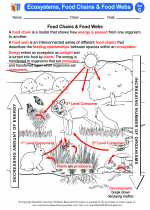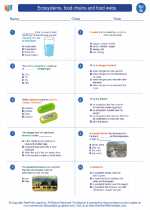Defense in Living Organisms
Defense is a crucial aspect of living organisms, allowing them to protect themselves from potential threats such as pathogens, predators, and environmental stressors. The defense mechanisms in living organisms are diverse and can be categorized into two main types: innate defenses and adaptive defenses.
Innate Defenses
Innate defenses are the body's first line of defense against pathogens and other harmful agents. These defenses are non-specific, meaning they provide a general level of protection without targeting specific pathogens. Innate defenses include physical barriers such as the skin and mucous membranes, as well as chemical barriers like stomach acid and antimicrobial proteins.
Adaptive Defenses
Adaptive defenses, also known as acquired immunity, involve the body's ability to recognize and remember specific pathogens, allowing for a targeted response upon subsequent exposure. This type of defense is characterized by the production of antibodies and the activation of immune cells to combat specific threats.
Study Guide
- Describe the role of physical barriers in innate defenses.
- Explain the concept of acquired immunity and the role of antibodies in adaptive defenses.
- Compare and contrast innate and adaptive defenses, highlighting their differences in specificity and memory.
- Discuss the importance of a healthy immune system in maintaining overall defense against pathogens and diseases.
- Explore the impact of environmental stressors on the effectiveness of defense mechanisms in living organisms.
Understanding the concept of defense in living organisms is essential for comprehending the complexity of the immune system and its role in maintaining overall health and well-being.
[Defense] Related Worksheets and Study Guides:
.◂Science Worksheets and Study Guides Seventh Grade. Ecosystems, food chains and food webs

 Activity Lesson
Activity Lesson
 Worksheet/Answer key
Worksheet/Answer key
 Worksheet/Answer key
Worksheet/Answer key
 Worksheet/Answer key
Worksheet/Answer key
 Vocabulary/Answer key
Vocabulary/Answer key
 Vocabulary/Answer key
Vocabulary/Answer key
 Vocabulary/Answer key
Vocabulary/Answer key
 Vocabulary/Answer key
Vocabulary/Answer key
 Vocabulary/Answer key
Vocabulary/Answer key
